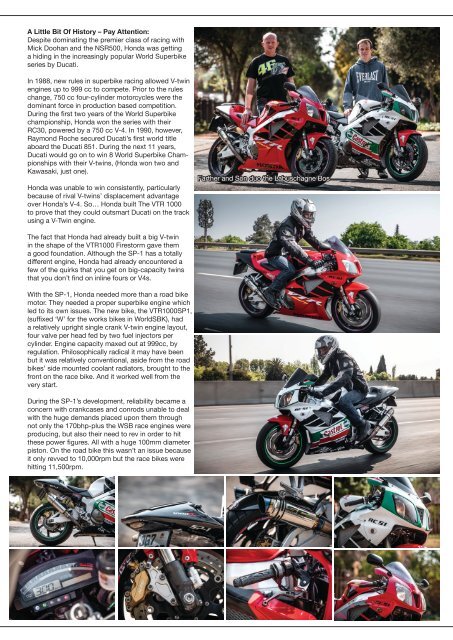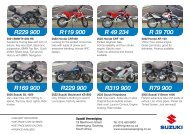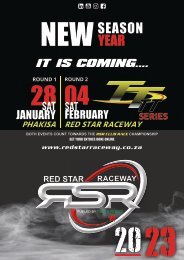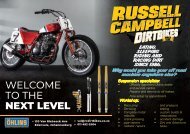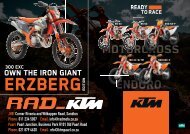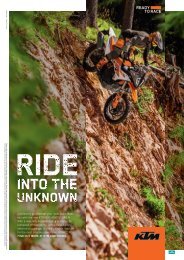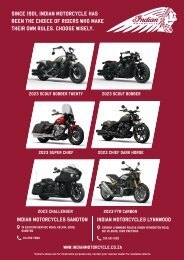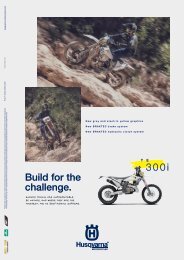RIDEFAST NOVEMBER 2021
Create successful ePaper yourself
Turn your PDF publications into a flip-book with our unique Google optimized e-Paper software.
A Little Bit Of History – Pay Attention:<br />
Despite dominating the premier class of racing with<br />
Mick Doohan and the NSR500, Honda was getting<br />
a hiding in the increasingly popular World Superbike<br />
series by Ducati.<br />
In 1988, new rules in superbike racing allowed V-twin<br />
engines up to 999 cc to compete. Prior to the rules<br />
change, 750 cc four-cylinder motorcycles were the<br />
dominant force in production based competition.<br />
During the first two years of the World Superbike<br />
championship, Honda won the series with their<br />
RC30, powered by a 750 cc V-4. In 1990, however,<br />
Raymond Roche secured Ducati’s first world title<br />
aboard the Ducati 851. During the next 11 years,<br />
Ducati would go on to win 8 World Superbike Championships<br />
with their V-twins, (Honda won two and<br />
Kawasaki, just one).<br />
Honda was unable to win consistently, particularly<br />
because of rival V-twins’ displacement advantage<br />
over Honda’s V-4. So… Honda built The VTR 1000<br />
to prove that they could outsmart Ducati on the track<br />
using a V-Twin engine.<br />
Farther and Son duo the Labuschagne Bos<br />
The fact that Honda had already built a big V-twin<br />
in the shape of the VTR1000 Firestorm gave them<br />
a good foundation. Although the SP-1 has a totally<br />
different engine, Honda had already encountered a<br />
few of the quirks that you get on big-capacity twins<br />
that you don’t find on inline fours or V4s.<br />
With the SP-1, Honda needed more than a road bike<br />
motor. They needed a proper superbike engine which<br />
led to its own issues. The new bike, the VTR1000SP1,<br />
(suffixed ‘W’ for the works bikes in WorldSBK), had<br />
a relatively upright single crank V-twin engine layout,<br />
four valve per head fed by two fuel injectors per<br />
cylinder. Engine capacity maxed out at 999cc, by<br />
regulation. Philosophically radical it may have been<br />
but it was relatively conventional, aside from the road<br />
bikes’ side mounted coolant radiators, brought to the<br />
front on the race bike. And it worked well from the<br />
very start.<br />
During the SP-1’s development, reliability became a<br />
concern with crankcases and conrods unable to deal<br />
with the huge demands placed upon them through<br />
not only the 170bhp-plus the WSB race engines were<br />
producing, but also their need to rev in order to hit<br />
these power figures. All with a huge 100mm diameter<br />
piston. On the road bike this wasn’t an issue because<br />
it only revved to 10,000rpm but the race bikes were<br />
hitting 11,500rpm.


